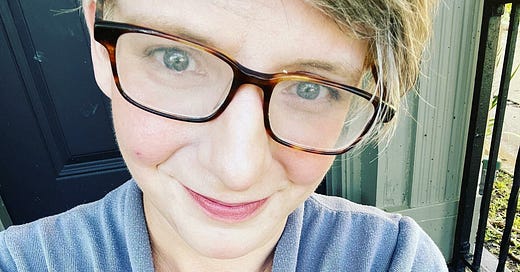Introducing Cognitive Depth Therapy (CMT): A Framework for Nuance, Growth, and Connection
Therapy often feels like trying to untangle a ball of yarn that keeps knotting itself back up. For those of us navigating trauma, grief, or just the complexity of being human—especially as autistic/AuDHD folks—traditional therapy can sometimes feel too rigid, too focused on “fixing” us instead of honoring the messy brilliance of who we are.
Cognitive Depth Therapy (CDT) grew out of my work with clients who felt stuck in binaries like “success or failure” and “growth or struggle.” CDT embraces the middle ground: the nuance, paradox, and humanity of our experiences. It’s not about finding the “right” path—it’s about building meaning, connection, and curiosity along the way.
The Five Pillars of CMT
At the heart of CMT are five pillars: joy, absurdity, integration, grounding, and connection. Together, they form a framework that helps clients reconnect with themselves and their stories in a way that feels compassionate and real.
1. Joy: Finding Light Amid the Shadows
Joy isn’t about ignoring pain or forcing positivity. It’s about noticing the small things—a laugh, a favorite song, a really good sandwich—that remind you why you’re here. Joy balances the heaviness and keeps us tethered to what matters.
2. Absurdity: Disrupting Rigidity
Sometimes, the best way to break out of a thought loop is with something utterly ridiculous. Imagine a tap-dancing turtle interrupting your spiral of self-doubt. Absurdity disrupts rigidity with humor and reminds us not to take every thought so seriously.
3. Integration: Creating Meaning from Fragments
Life isn’t linear—it’s a collage of moments, contradictions, and unfinished edges. Integration is about making sense of it all, not by forcing it to fit neatly, but by finding meaning in how the pieces come together.
4. Grounding: Staying Present with Pain
Pain is part of the deal, but it isn’t the whole deal. Grounding helps you stay connected to the present moment so you can move through discomfort with intention instead of avoidance. It’s not about eliminating pain—it’s about learning to live alongside it.
5. Connection: Building Bridges to Sustain Growth
Healing isn’t meant to be a solo project. Connection—to yourself, to others, to your values—is what sustains growth. It’s the bridge between where you’ve been and where you’re going.
Why CMT Works
CMT is practical, creative, and deeply human. It combines humor, curiosity, and relational depth to help clients move through life’s complexities with more flexibility and compassion. It doesn’t try to fix you—because you’re not broken. Instead, it invites you to explore your story, your patterns, and your capacity to grow in ways that feel authentic to you.
Why I Created It
I didn’t set out to invent a therapy framework. I just wanted something that worked for the brilliant, complex clients I was seeing—many of them autistic or AuDHDers, many carrying grief or trauma that didn’t fit into tidy boxes. I built CMT as much for them as for myself, pulling together what resonated, what felt honest, and what helped.
It’s a framework that meets people where they are, offering tools for exploration rather than answers. It’s playful, adaptive, and rooted in the belief that growth happens not in opposition to complexity but because of it.
An Invitation
CMT is for anyone navigating the complications of life. It’s for the people who feel like therapy hasn’t quite spoken their language yet. It’s for therapists who want something that embraces nuance instead of fighting it.
Your life isn’t something to solve—it’s something to live. It’s a story, a collage, a connection. Let’s start there.


